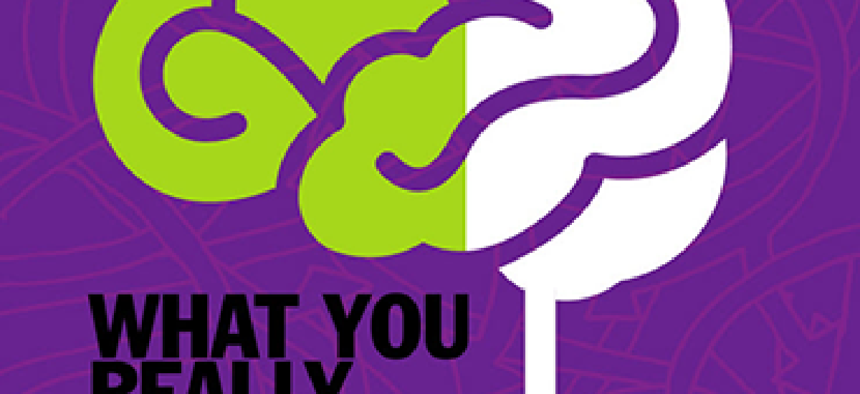CIOs: 'A strategic partner, not a coder-in-chief'

Agency heads, acquisition officers and even CIOs don't need to be hard-core techies. FCW's four-part look at the expertise that's really required to make federal IT run.

Government technology leaders are facing new demands from inside and outside their organizations. The rapid consumerization of technology is creating an appetite among the public for easy-to-use apps for accessing government services, and tech-savvy senior officials are increasingly interested in using new IT tools to deliver those services.
In addition, Congress has empowered agency-level CIOs to take more control of technology spending and hiring and to take a seat at the table with the top mission-delivery executives.
So what do CIOs have to know to do the job? Do they need to be able to assemble their own boxes and networks? Write code? Haggle for the best price for software and services? Be a cybersecurity wonk?
And how far down in the weeds does a CIO need to get? Is there such a thing as a CIO who knows too much about technology?
‘Not a coder-in-chief’
“I don’t think you should actually be coding as a CIO,” David Bray told FCW. The youthful CIO of the Federal Communications Commission comes to technology management from a geekier background than most. He has worked as a programmer and a network engineer, and he tinkers with tech on his own time. He recently used the Android OS to design a peer-to-peer mesh network, with some success.
But for Bray, the real secret to being a successful CIO is merging an ability to engage in top-level strategy with an ability to let talented individuals excel at their jobs.
“The best leaders recognize that they have blind spots,” he said. “They make themselves open to other people. It would be hubris to think you know everything. You’ll never be able to keep up with it. The best thing that a CIO needs to bring in terms of talent and skills is really how to set a compelling vision and attract sufficient talent as well as recruit talent already on the team to achieve that vision.”
Paul Brubaker, who as a Senate staffer helped draft the Clinger-Cohen Act that codified the agency CIO role, said a successful CIO needs to see the big picture when it comes to the organization’s lines of business.
“The reason why CIOs haven’t been invited to the top table is that they typically represent some narrow element of IT governance, which is seen as playing in the administrative weeds, not adding value to the mission,” said Brubaker, who served as deputy CIO at the Defense Department and is now director of federal government business at AirWatch by VMware. Some modicum of technical experience and ability is important, but not essential, he added.
Focus on the user
Sonny Hashmi, former CIO at the General Services Administration and now managing director for government at cloud collaboration firm Box, sees an urgent need for a new breed of CIO.
“I think CIOs need to be a lot more tech savvy than they are,” he said.
Because large organizations are bogged down in compliance-based tasks, thinking about how technology can drive the future of agencies is frequently farmed out to the growing ranks of chief data officers, chief technology officers, chief innovation officers or even expert cadres such as GSA’s 18F (an organization Hashmi helped establish) or the U.S Digital Service.
“My view is [that] the CIO should be doing all of that strategic thinking,” Hashmi said. “The reason these new roles emerge is not having the right top leadership.”
Although CIO shops need to run networks, manage security and do other essential tasks, the ideal CIO will find trusted partners among the senior staff to manage those tasks so that he or she can spend 80 percent of his or her time focusing on the larger strategic innovation challenges and helping to educate senior mission staff on what IT can do, he said.
A CIO candidate who has years of experience running help desks, maintaining networks or managing security might not be “adding differentiated capability to the organization,” Hashmi added.
He also emphasized the need to hire CIOs who know how to make the user experience a top priority. In the public and private sectors, “large organizations that run on legacy systems are UX-challenged,” he said. In the private sector, “if your app is not easy to use, consumers will not use your service.... It’s very simple.”
More and more people are using technology to connect with government, which means the government is in the midst of transitioning to an environment in which data and technology don’t just support services, they are the services. If those new services are going to be developed and launched successfully, CIO shops need leaders for whom the user experience is a core capability, Hashmi said.
Still room to get your hands dirty
As chief innovation officer at the Defense Intelligence Agency, Dan Doney is part of the growing ranks of C-level technology advisers who work alongside CIOs at agencies. When it comes to evaluating opportunities, Doney said, hands-on experience is a big plus, particularly with cloud-based technology.
“If you are a senior IT manager in the government and you have not actually used the cloud for yourself — you’ve not released an application into the cloud, you’ve not done development in the cloud — you’re doing yourself a great disservice,” Doney said at a recent event in Washington. “You need to experience it yourself so you have a gut sense of what cloud is capable of doing for you. Unfortunately, many of our senior leaders have not had that kind of experience, and it’s impacting their confidence.”
Ultimately, a CIO must wear many hats. Brubaker likened the role to the classic Renaissance person with a range of interests, talents and skills. And it’s becoming more and more obvious that the ability to keep systems running is just the beginning.




